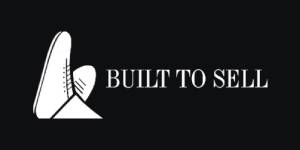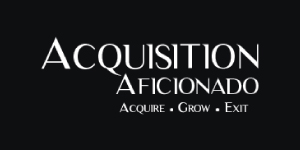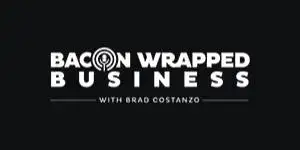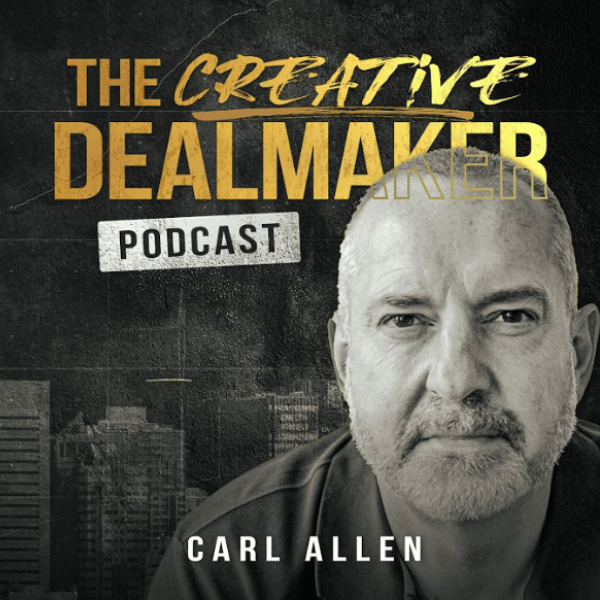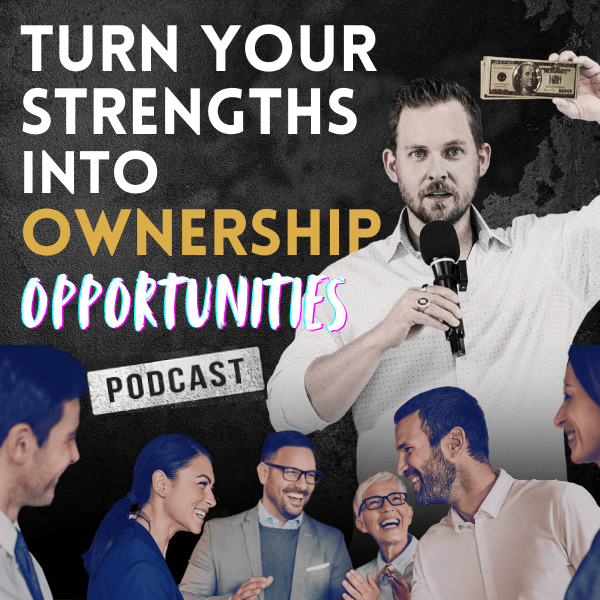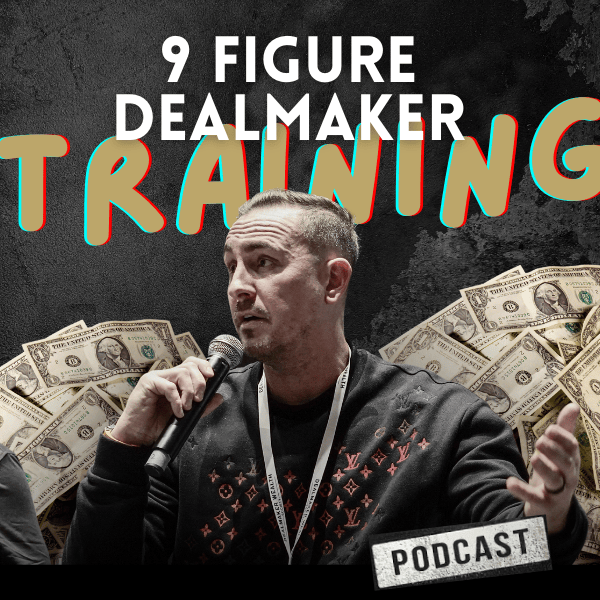Lessons From Salesforce’s Acquisition of Slack
Lessons From Salesforce’s Acquisition of Slack

This week, Salesforce.com announced the biggest acquisition in its 21–year history.
A whopping $27 billion for Slack, the proprietary business communication platform many of us have grown to know and love.
You could argue Slack is “sticky.” Can you imagine communicating with your team WITHOUT Slack and going back to emailing back and forth?
UGH! No thanks.
Salesforce and Slack are both public companies. Slack was valued at $16.6 billion during trading this past Wednesday.
Yet Salesforce’s offer is $10.4 billion MORE THAN Slack’s market value… a 63% premium!
Why does Salesforce want this business SOOO badly?
And what can you learn about growing YOUR existing business through acquisition from this deal without paying a 63% premium over true value?
First, it’s difficult to truly value Slack because… it’s NEVER made a profit.
Here are the last 12-months of financials:
Revenue = $834 million
EBITDA (Profit) = – $302 million
So, any multiple of EBITDA should be NEGATIVE!!
What’s the problem? Only SOME of Slack’s customers actually pay because there’s a ton of functionality and usage for free accounts.
No wonder it’s losing money.
When you are buying a small business, it’s normal to pay between a 2X–5X multiple (the sweet spot for LBOs is 2X-3X).
And as you know, many things can impact the multiple, including growth, optimization, intellectual property, sector, profit margin, etc.
This said, it isn’t atypical to see a large, technology business NOT make money.
So if Slack isn’t making money, why would Salesforce offer to pay so much for it?
One reason…
Customers.
Slack reportedly has 12 million customers across its paid and free applications.
If you divide total revenue of $834 million by 12 million customers, that’s a super low $69.50 per customer, per year.
On the other hand, Salesforce is an enterprise software company specializing in customer relationship management (CRM). It competes with Microsoft, Oracle and SAP — the three horsemen of the enterprise software space.
With Salesforce, those FOUR businesses are directly competing for customers every single day.
Microsoft is the obvious target here. It’s Teams platform (similar to Slack but far WORSE in my opinion) has 75 million users, many of who also buy Microsoft’s full range of software products and services.
The annual cost to use Salesforce.com ranges between $300 and $3,600 per year. There’s a TON of incremental revenue available now with 12 million new customers for its products.
That’s why this deal will close. Salesforce is BUYING new customers — 12 million of them for $27 billion. That’s $2,250 per customer.
Frankly, it makes sense to me when you factor in the potential lifetime value of the customer… providing Salesforce can execute on the cross-selling opportunity and retain those customers over time.
Remember, there are only three ways to add more customers to your business:
- Pound the pavement and win them organically. More marketing, more leads, more conversions.
- Set up a JV with another business (like an affiliate) and promote to that list of customers in exchange for share of revenue.
- Buy another business that has customers you don’t, and market your products and services to them. You can also sell the products and services of the business you acquire to your existing customers for more revenue streams.
There are two other benefits of acquiring another business, over and above cross-selling of products and services:
- Cost synergies (offices, admin, professional services, duplicate employees, stronger buying power, etc.) from combining two businesses
- Addition of key talent.
Slack and Salesforce are both conveniently based in San Francisco. And I’m sure Salesforce has all the senior talent it needs to grow the business.
But for you, it would be very different.
Let’s look at an example…
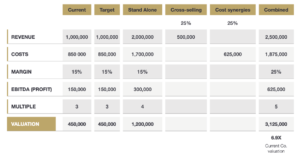
Say your current business generates $1 million in revenue at a 15% profit margin, so it’s worth $450,000 at a 3X multiple.
You find another business with the same numbers, multiple and valuation.
When you acquire another business, even if you let them stand alone, the combined valuation will increase to $1.2 million.
Why $1.2 million versus $900K? The combined profit of $300,000 might yield a 4X multiple compared to a 3X multiple for the smaller entities.
But look what happens when you apply cross-selling and cost synergies…
Assume you generate a 25% cross-selling rate between the two sets of products, services and customers. That’s $500,000 of new revenue for a combined $2.5 million.
Now let’s look at the cost side. If you own a $1 million revenue business and you acquire another one of the same size, the $850K in costs for each business can be significantly reduced.
Assume you can eliminate all duplicate costs, drive other efficiencies, etc. and increase total profit margin from 15% to 25%.
That means you are now earning 25% (or $625K) on the combined $2.5 million of revenue.
At that profit level, you can sell for a 5X multiple… so now your business is worth more than $3.1 million, nearly a 7X increase from the $450K valuation your single business started with.
Not bad for JUST ONE DEAL.
The big lesson here is access to customers. Salesforce has deep pockets and would rather BUY additional revenue and customers than win them one by one.
Bolt-on acquisitions are generally how the big boys grow, but we little guys can take advantage of the strategy as well.
Just figure out:
- What complementary products or services do your customers buy from someone else that you don’t sell?
- Would it make more sense to acquire a supplier or partner so you can reduce costs and also market to the new customers you inherit?
- Can you buy a competitor and double down on your market share?
Once you find these target opportunities, the rules are the same as if it was your first acquisition.
Agree on a valuation and deal structure, go out and raise the capital from other people, and hire a contingent-fee attorney and CPA to close the deal for you.
Go and build an empire.
Until next time, bye for now.
